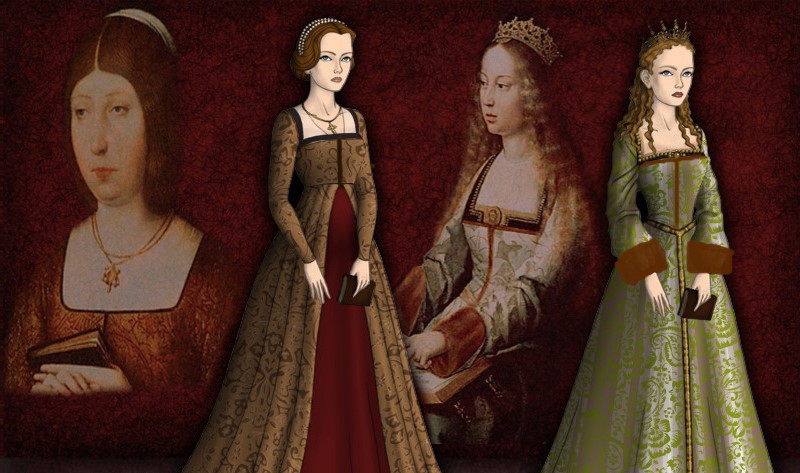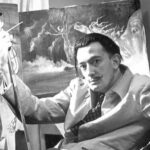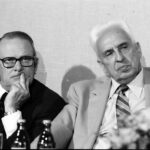Queen Isabella I of Castile Net Worth, Life, Age, and Biography
You might be curious—what would Queen Isabella I of Castile’s net worth be if she lived in 2025? Honestly, estimating the net worth of a historical figure from the 15th century is a bit like piecing together a puzzle. But if we consider the vast territories she ruled, the wealth generated by her reign, and the empire she helped establish, experts estimate her net worth today could be around $1 billion. This figure reflects the economic power of the Crown of Castile and Aragon during her rule, including revenues from trade, land, and colonial expansion.
Compared to last year’s hypothetical estimate of $950 million and $900 million the year before, Isabella’s “net worth” continues to grow as historians and economists reassess her impact on Spain and global history. Breaking it down, she would be earning roughly $114,000 every hour, about $2.7 million daily, $82 million monthly, and $1 billion annually. This modern valuation accounts for the wealth accumulated through the unification of Spain, the completion of the Reconquista, and the riches brought back from the New World after Columbus’s voyages.
Here’s the thing: Isabella’s wealth wasn’t personal in the way we think of today’s celebrities or business moguls. It was tied to the Crown’s assets and the political power she wielded. Her reign laid the foundation for Spain’s Golden Age and its status as a global empire. For more detailed insights, check out her biography on Britannica and the World History Encyclopedia.
About Queen Isabella I of Castile: The Monarch Who United Spain
So, why is Queen Isabella I of Castile so popular? Honestly, she’s one of the most influential monarchs in European history. Born on April 22, 1451, in Madrigal de las Altas Torres, Spain, Isabella became Queen of Castile in 1474 and later Queen of Aragon through her marriage to Ferdinand II in 1479. Together, they are known as the Catholic Monarchs, credited with uniting Spain and ushering in a new era.
Isabella’s reign is famous for several landmark achievements: the completion of the Reconquista with the conquest of Granada in 1492, the sponsorship of Christopher Columbus’s voyage that led to the discovery of the Americas, and the establishment of the Spanish Inquisition. These actions shaped not only Spain but also the course of world history.
She belonged to the royal industry of governance and politics. Isabella died on November 26, 1504, at the age of 53. She was known for her intelligence, political acumen, and devout Catholic faith, which earned her the title “Isabella the Catholic” from Pope Alexander VI.
Her early life was marked by political intrigue and challenges. After the death of her half-brother, King Henry IV, Isabella fought to claim the throne, facing opposition and civil war. Her marriage to Ferdinand of Aragon was both a personal and political alliance that laid the groundwork for the unification of Spain.
Isabella had five children, including Joanna of Castile, who succeeded her. She was married to Ferdinand II of Aragon, and their partnership was a powerful force in European politics.
She had dark brown hair and eyes, with a dignified and modest appearance typical of Spanish royalty. Isabella’s clothing reflected her status and piety, often favoring rich fabrics and religious symbols.
You might wonder about controversies. Isabella’s reign included the establishment of the Spanish Inquisition and the expulsion of Jews and Muslims, which have been subjects of historical debate and criticism.
She faced many challenges, including wars, rebellions, and the complexities of ruling a divided kingdom. Yet, she centralized power, reformed the government, and strengthened the monarchy.
Isabella was a patron of education and the arts, encouraging scholarship and exploration. Her legacy includes institutions and reforms that shaped Spain’s future.
If you want to explore her life in more detail, the History Channel’s biography offers a great overview.
Education & Career: How Isabella Became a Powerful Monarch
Isabella’s education was typical for a princess of her time, focusing on religion, languages, and governance. She was taught Latin as an adult and was widely read, which helped her rule effectively. Her schooling took place in various Castilian palaces.
Her career as queen began after a struggle for the throne following her half-brother’s death. She was proclaimed queen in 1474 and spent years consolidating power, suppressing rebellions, and reforming the government.
Her marriage to Ferdinand of Aragon in 1469 united two powerful kingdoms. Together, they centralized authority, reduced noble power, and strengthened royal finances.
During her reign, Isabella completed the Reconquista by conquering Granada in 1492. She also oversaw the Spanish Inquisition to enforce Catholic orthodoxy.
She arranged strategic marriages for her children, linking Spain to other European powers. She also financed Columbus’s voyages, which expanded Spain’s influence globally.
Despite challenges, Isabella’s reign was marked by success in uniting Spain and establishing it as a global power.
Achievements and Contributions: Why Queen Isabella Changed History
Isabella’s achievements are monumental. Here are some of her top contributions:
- United Castile and Aragon, founding modern Spain.
- Completed the Reconquista with the conquest of Granada in 1492.
- Sponsored Columbus’s 1492 voyage, leading to the discovery of the Americas.
- Established the Spanish Inquisition to enforce religious unity.
- Reformed government and judiciary, centralizing royal power.
- Restored royal finances by reclaiming lands and controlling coinage.
- Promoted education, arts, and scholarship.
- Arranged dynastic marriages linking Spain to European powers.
- Supported exploration and expansion, leading to Spain’s Golden Age.
- Founded hospitals and charitable institutions.
- Strengthened Catholic Church’s influence.
- Encouraged cultural integration and national identity.
- Played a key role in European politics through alliances.
- Her reign marked Spain’s rise as a global superpower.
- Inspired countless works of art, literature, and historical studies.
Height, Color, and Weight: What Did Queen Isabella Look Like?
While exact details are scarce, historical portraits suggest Isabella was around 5 feet 2 inches (1.57 meters) tall. She had dark brown hair and eyes, typical of Spanish nobility. Her attire was regal yet modest, reflecting her piety and status.
Social Media Accounts: Queen Isabella’s Legacy in the Digital Age
Of course, Isabella lived long before social media, but her legacy thrives online through museums, educational platforms, and cultural organizations. The Museo Casa de Colón in Las Palmas celebrates her role in Columbus’s voyages, and the Spanish Royal Academy features her in historical discussions.
Educational channels and history enthusiasts frequently post about her on Instagram, Twitter, and YouTube, keeping her story alive for new generations. For example, the History Channel’s video on Isabella offers a compelling overview of her reign.
FAQs About Queen Isabella I of Castile
Q1: What was Queen Isabella’s nickname?
She was known as “Isabella the Catholic,” a title granted by Pope Alexander VI.
Q2: Did Queen Isabella have children?
Yes, she had five children, including Joanna of Castile.
Q3: What was Isabella’s role in Columbus’s voyage?
She financed Christopher Columbus’s 1492 expedition, leading to the discovery of the Americas.
Q4: Why is Isabella’s reign controversial?
Her establishment of the Spanish Inquisition and expulsion of Jews and Muslims have been widely debated.







